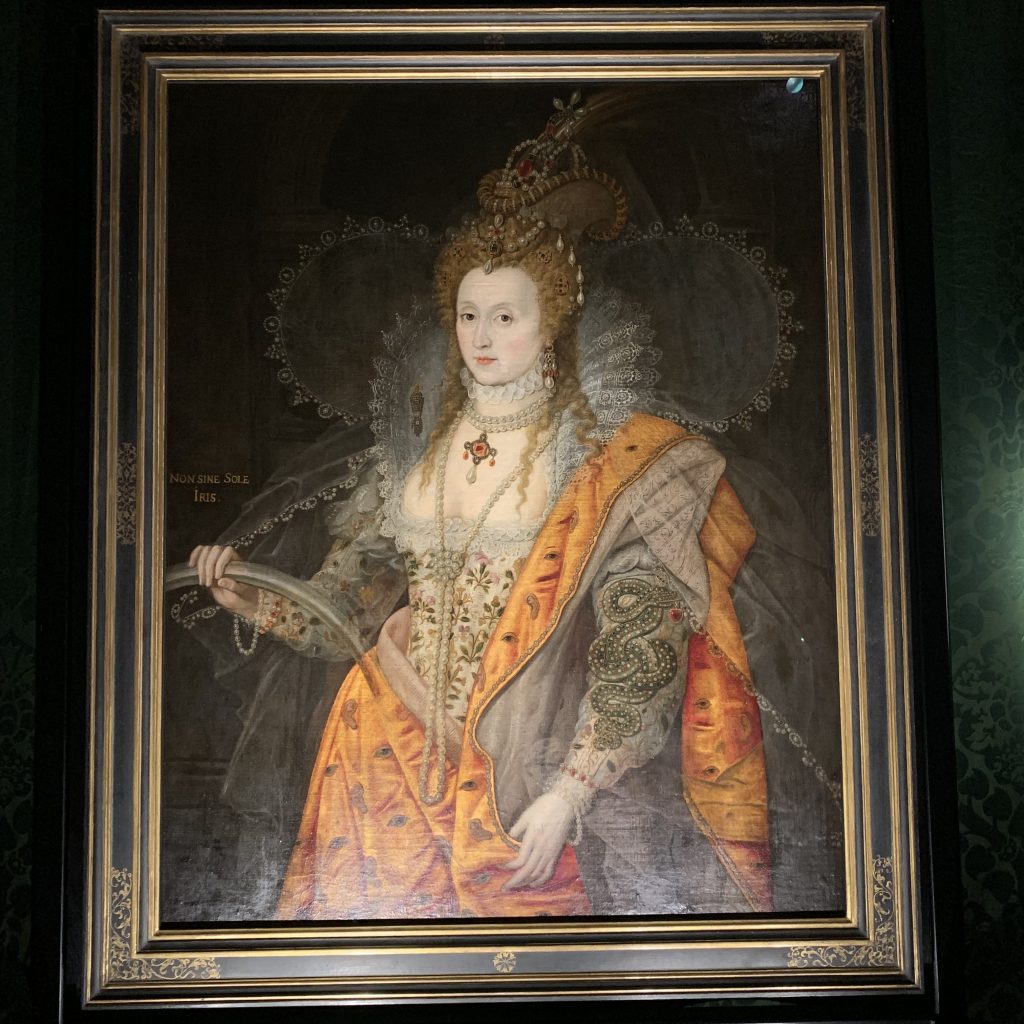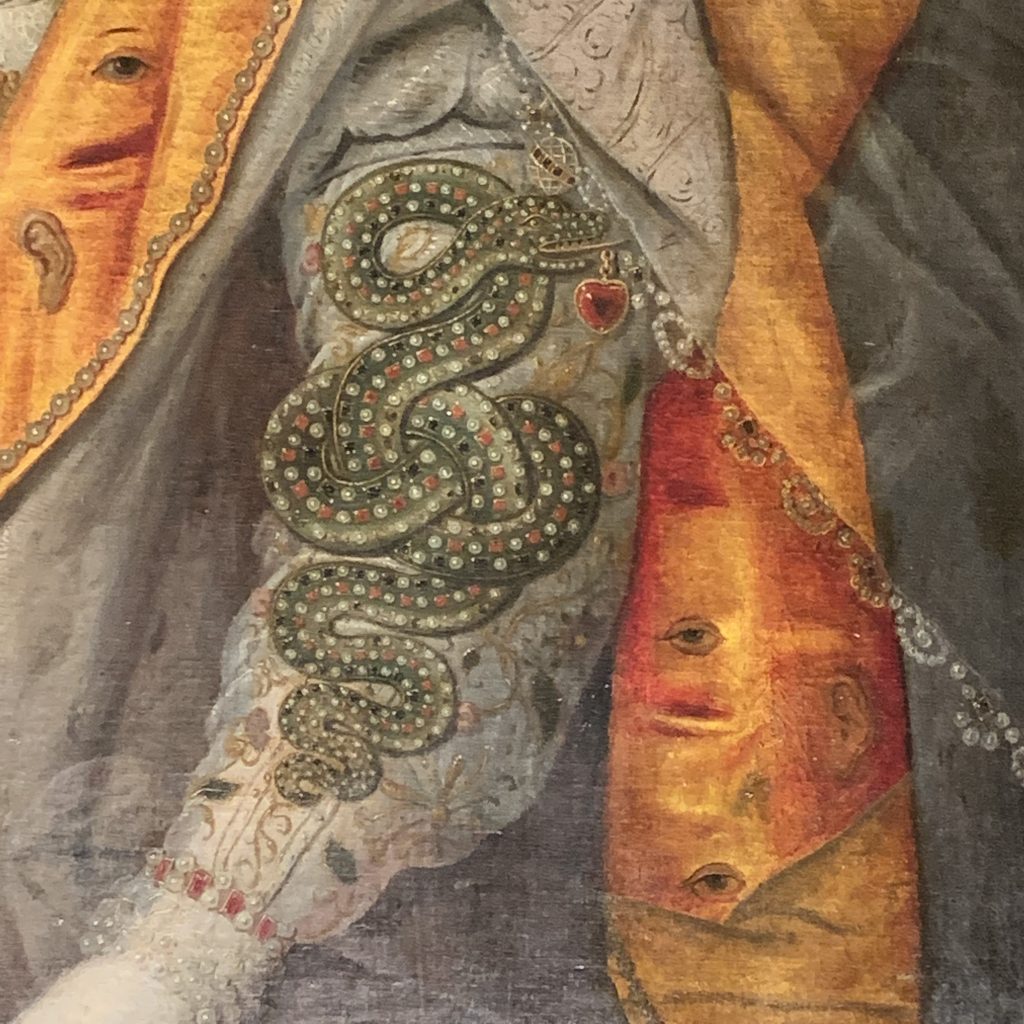The Bacton Altar Cloth at Hampton Court Palace
The Bacton Altar Cloth is a rare survival of Elizabethan dress worn by Elizabeth I and on display with the iconic Rainbow Portrait, this autumn at Hampton Court Palace.
I am not an avid historian, however, a recent trip to Hampton Court Palace opened my eyes to a fascinating world of Tudor fashion and its hidden secrets.
When Queen Elizabeth I died in 1603, her wardrobe contained almost two thousand items of dress and yet hardly any of it survives today.
Much of the Tudor wardrobe was sold or destroyed when the Great Fire of London burned the royal storehouses in 1666, although the Tudors themselves, as a sign of favour, gave some away. The intrinsic value of these pieces meant they were handed down and repurposed until their history was lost.
It seems likely that the embroidered silk cloth found its way to the small village of Bacton by association with Blanche Parry, Elizabeth’s most faithful servant, and almost life-long companion. It is likely that the Queen or her ladies-in-waiting in memory of Blanche sent it to Bacton.
For centuries the embroidered panel was preserved as an altar cloth in the Church of St Faith in Bacton, Hertfordshire.
Embroidery was a highly regarded skill for women in court. The little creatures and figures on the Bacton Altar Cloth were probably worked by a group of noblewomen, passing the time together. For the first time books could be widely reproduced. It was a sign of learning to own them and ladies used them to inspire their embroidery.
Cloth woven with silver was very expensive and the amount in the panel cost as much as a substantial house. Tudor law restricted the use of silver, and it could only have been made for royalty or the most important nobles at court.
Their research shows that the threads contain red Mexican dye, an expensive import from the New World.
Historic Royal Palaces commissioned the embroiderers’ at the Royal School of needlework (RSN) to replicate the motifs of the Bacton Altar Cloth. The process of replicating the stitches and patterns of the original embroidery allowed curators to understand the level of skill of the Tudor embroiderer.
The embroiderers were able to confirm the high level of artistry involved in the creation of the original cloth, including the use of ploied-thread (more than one thread in the needle) that created tone and shade.
As well as the Bacton Altar Cloth you will also have the chance to see the Rainbow Portrait, not only a glorious painting in its own right, it also has a host of hidden meanings within her dress.

Apparently, the Tudors had a great sense of humour and loved edgy jokes, which was reflected in their clothing.
Firstly you can see that there are lots of pearls in this portrait and these symbolise virginity.
The orange cloak is embellished with eyes and ears. This is symbolising that she is always watching and listening, or that she has eyes and ears everywhere.
A jewelled serpent is entwined along her left arm and holds from its mouth a heart-shaped ruby. Above its head is a celestial sphere. This could have two meanings, firstly, the serpent symbolises wisdom; it has captured the ruby, which in turn symbolises the queen’s heart. In other words, the queen’s passions are controlled by her wisdom. The celestial sphere echoes this theme and it symbolises wisdom and the queen’s royal command over nature. The second is the serpent symbolises fertility while the heart at the top right hanging from the snake symbolises love.


In Elizabeth’s hand, it looks like she is holding a clear tube – this is indeed a rainbow, however, the colours have faded with time from the portrait. The rainbow in this portrait symbolises peace.
The wording on the portrait. “Mon Sine Sole Iris” means No Rainbow Without the Sun. Only the queen’s wisdom can ensure peace and prosperity.
Above her crown is a crescent-shaped jewel, which alludes to Cynthia, the goddess of the moon.
The trip to Hampton Court Palace was certainly a fascinating day out with lots of other historical points of interest to see at the Palace and the Gardens.
For more information visit here
Poppy Watt


